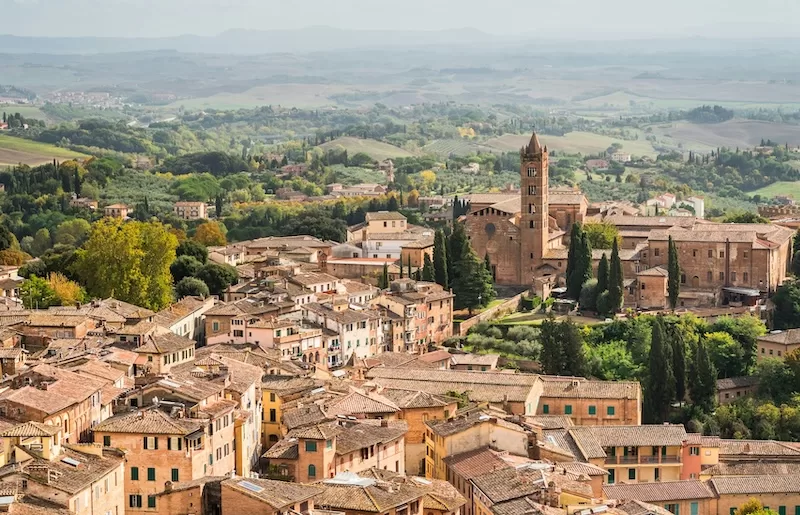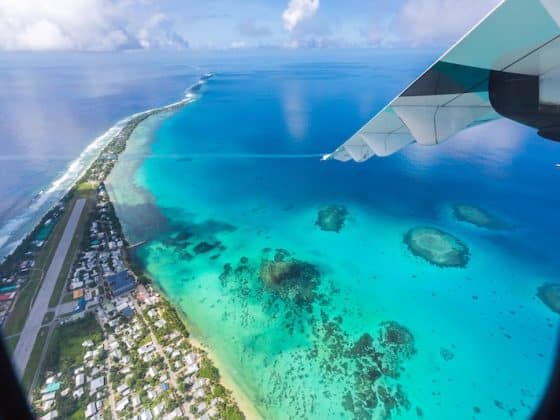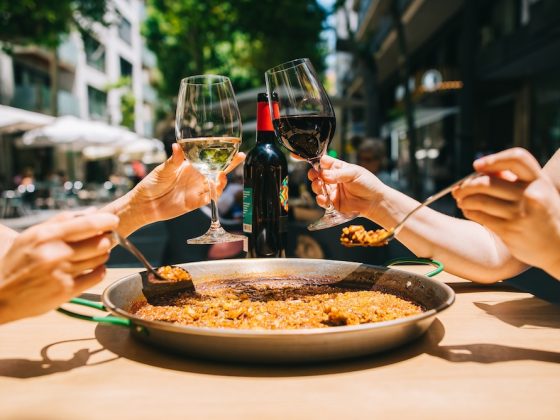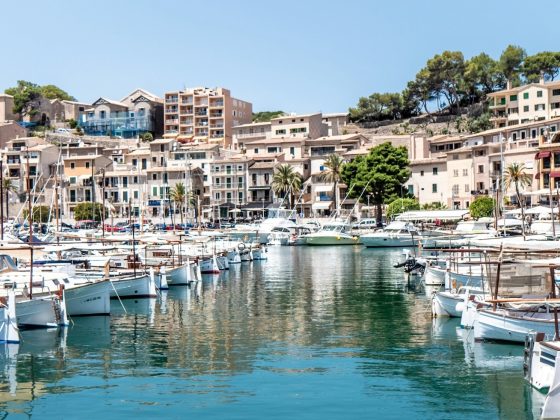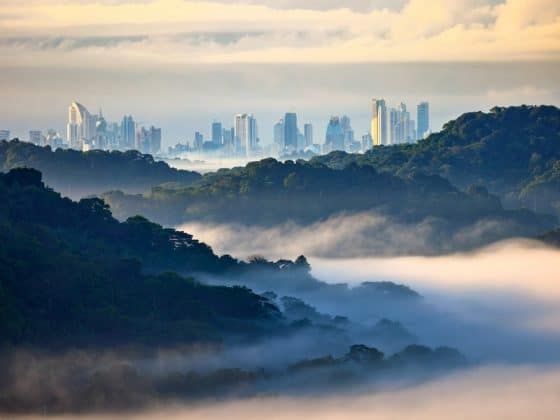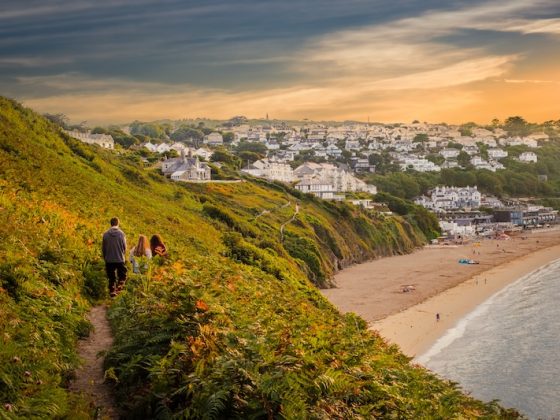Under the Tuscan Sun
Living in Tuscany is equal parts romance and routine. It’s early morning church bells echoing through narrow streets, market vendors shouting prices over pyramids of artichokes, and relaxed evenings spent watching the light fade across hills lined with cypress trees. It’s also the reality of navigating Italy’s paperwork, waiting for the plumber who arrives two hours later than planned, and learning to shrug, smile, and pour another coffee.
The beauty is constant, but it’s not delicate. It’s rugged, lived-in, and deeply human. What draws so many expats and remote workers to Tuscany is not just the scenery but the texture of life, where time moves differently and pleasure hides in small, daily details.
This article aims to give you a closer look at the beauty, the trade-offs and the tips that make living in Tuscany a deeply rewarding experience.
What Makes Tuscany different
Italy is full of beauty, but Tuscany feels different. It’s where art, agriculture, and daily life overlap in ways that don’t quite happen anywhere else. Cities like Florence and Siena hold the history of the Renaissance, yet twenty minutes outside their walls you’re driving past vineyards and olive groves. Few places manage that balance between culture and countryside so effortlessly.
Tuscany also sits geographically and culturally in Italy’s center. It borrows the discipline and design sense of the north but keeps the warmth and spontaneity of the south. The result is a way of living that feels both refined and grounded. It’s elegant without being extravagant, proud without being hurried.
There’s also a deep respect for craftsmanship here. Everything is made with intent: leather goods, ceramics, wine, even olive oil. That perfectionism seeps into life itself, not in the obsessive way, but in the pursuit of the best, most authentic lifestyle possible.
Tuscany is where Italy learned to see itself. The Italian language, the Renaissance vision, and much of the country’s cuisine trace their roots to these hills. What sets it apart is coherence: beauty and function, city and land, modernity and memory, all speaking the same language. It’s also practical. Art belongs to the land; food belongs to the season.
For many expats, that coherence and harmony is the real luxury: a life that doesn’t need constant improvement, only attention.
Why People Fall For Tuscany
There’s a reason Tuscany has become shorthand for the good life. The air feels different, dry and fragrant, shaped by pine and vineyard dust. Light drapes across the landscape like something alive, turning hills gold in the morning and amber by dusk.
People come for that beauty, but they stay for what it does to them. Meals last longer. Conversations stretch late into the evening. The pulse slows until you start measuring time by seasons, not minutes. Tuscany isn’t about constant reinvention; it’s about refinement. The same olive groves and wineries have stood for centuries, and somehow that permanence translates into security, into roots.
For expats and remote workers, it’s the balance that captivates. The ability to live surrounded by history and still have Wi-Fi fast enough for calls with clients overseas. Life here offers depth without drama. You can start the morning with espresso in Florence, spend lunch in a medieval village, and reach the Tyrrhenian Sea by afternoon.

But before you start dreaming about cypress-lined drives and market mornings, it’s worth understanding what life here actually costs. Beauty aside, living in Tuscany comfortably depends on knowing where your euros go and how to make them stretch.
Cost of Living in Tuscany
Housing and rent
Tuscany covers everything from bustling Florence to tiny hilltop hamlets where time seems to stop. That variety shows up in rent prices. In Florence, a one-bedroom apartment in the city centre often ranges from €900 to €1,400 per month, while just thirty minutes away in towns like Pistoia or Arezzo, similar places drop to €500–€800.
Old farmhouses can be found for less if you are open to rustic charm and DIY repairs. Buying can be surprisingly attainable: small village homes often list for €1,000 to €2,000 per square meter, while Florence’s historic centre can hit €6,000.
The secret is to think smaller and inland. The coast and major cities are beautiful, but the true bargains (and often the most authentic gems) are found in the hills.
Everyday expenses
Groceries are reasonable, especially if you buy local and avoid imported goods. A basket of weekly basics (pasta, cheese, bread, fresh vegetables, and wine) might total €50–€70. Dining out remains one of Tuscany’s joys: a two-course trattoria meal with wine can cost around €20–€25.
The average monthly budget for one person is about €1,450, including rent. Utilities vary by season, with heating bills spiking in winter due to old stone walls and cool interiors that keep summer bearable but require patience in January.
Buying property
Buying is a long game. For those with steady income or remote work, Tuscany’s property market remains appealing. Prices have risen modestly, but rural homes can still be found under €100,000. Renovation costs vary, but the payoff is enormous: space, peace, and the satisfaction of owning something older than your home country.
Foreigners can buy freely, though the process involves multiple notaries and translation of deeds. ExpatExchange and Idealista are excellent places to compare regional averages.
The Lifestyle and Mosaic of Tuscany
Numbers explain the cost of living, but they can’t capture what makes life here worth the effort. Tuscany is a collection of lives happening at different speeds, stitched together by sun, food, and the insistence of beauty. The region’s charm lies in contrast. City and countryside, energy and stillness, history and modernity coexist within an hour’s drive of one another. The choice isn’t simply where to live, but how to live and which version of Tuscany suits you best.
Choosing your setting: city, village, or vineyard
Every corner of Tuscany runs on its own tempo. Florence, for example, wakes early, buzzing with espresso shots, bicycle bells, and the chatter of art students spilling out of the Accademia. Life is fast by Tuscan standards: social, creative, and full of opportunities for work and culture. Apartments are smaller, nights are louder, and the energy is contagious.
Best for: those who crave art, connection, and city convenience.
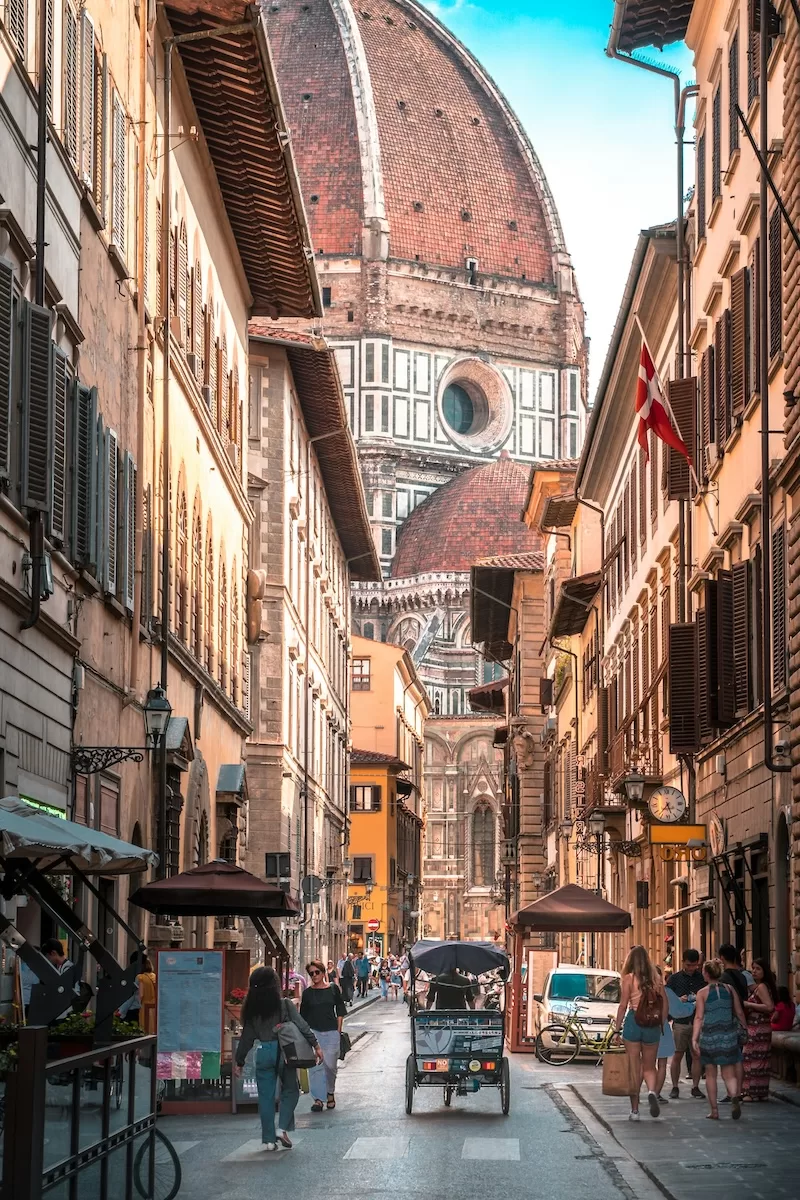
On the other hand, Lucca bustles behind its Renaissance walls. Locals cycle along the ramparts in the evening, and markets still open at dawn with the same vendors who’ve been there for decades. It’s tidy, friendly, and filled with groove rather than rush. You’ll find cafes where the barista knows your order after a week and neighbors who say goodnight from their windows.
Best for: remote workers, young families, or anyone seeking small-city comfort with big charm.
Read More Like This: Bellissima Lucca
Siena, with its brick piazzas and striped cathedral, holds an elegant stillness. Afternoons stretch long here; even the shadows seem to linger. Twice a year, the Palio horse race turns its medieval center into a whirlwind of color, but most days it feels historic without being frozen in time.
Best for: culture lovers who want tradition without isolation.
In the coast, Livorno, Porto Santo Stefano, and Grosseto bring salt air, seafood lunches, and an entirely different mindset. Mornings start with espresso on the promenade; evenings end with grilled calamari and friends at a seaside trattoria.
Best for: those drawn to water, open space, and a year-round holiday mood.
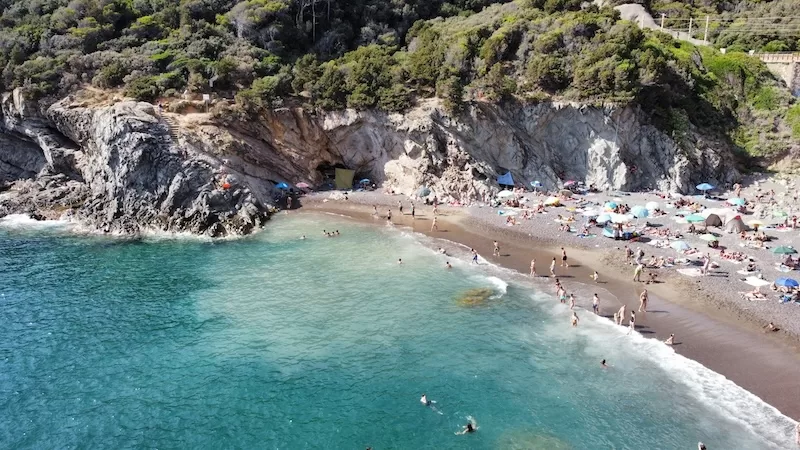
Move inland, and the noise falls away. The Chianti hills, Tuscany’s most famous vineyard region, and the Val d’Orcia trade traffic lights for rows of vines and gravel roads that glow pink at sunset. Here, the days follow the seasons: pruning in winter, harvest in autumn, long lunches in the shade when the grapes ripen heavy on the vines. Local life revolves around the land; not in a romanticized way, but in the daily reality of tending olive groves, sharing wine with neighbors, and watching the weather like news.
Evenings often end with a bottle from the vineyard down the road. Internet can falter, but conversation, stars, and the smell of fermenting grapes fill the space where noise used to be.
Best for: writers, retirees, and anyone ready to downshift into quiet living.

Many expats start in the cities and drift outward. It happens naturally. You come for Florence’s energy, but one weekend in Montepulciano or Pienza, standing in silence with nothing but wind and bells, and something changes. Tuscany has that effect. It teaches you to notice again.
Tuscany rewards curiosity. Every village, every market, every vineyard has its own story. The more you wander, the more the region reveals: not all at once, but piece by piece, like a friendship that deepens over time.
Community, language, and belonging
Italians are welcoming but private. Friendship builds slowly, through repetition and presence: greeting the same barista each morning, attending the town festival even when you don’t fully understand the speeches, accepting the third glass of homemade wine offered by your neighbor.
Only about a third of locals speak fluent English, so learning some Italian is more than convenience; it’s connection. Simple gestures go far: a “buongiorno” at the bakery, a “grazie” at the market, and genuine patience when the conversation stretches beyond your vocabulary.
In the smaller towns, life is built around community. You’ll hear about truffle hunts and olive harvests over coffee, share meals that last hours, and receive advice that’s half unsolicited, half invaluable. Gossip is an art form. Generosity is too.
In short: show up, slow down, and the region will meet you halfway.
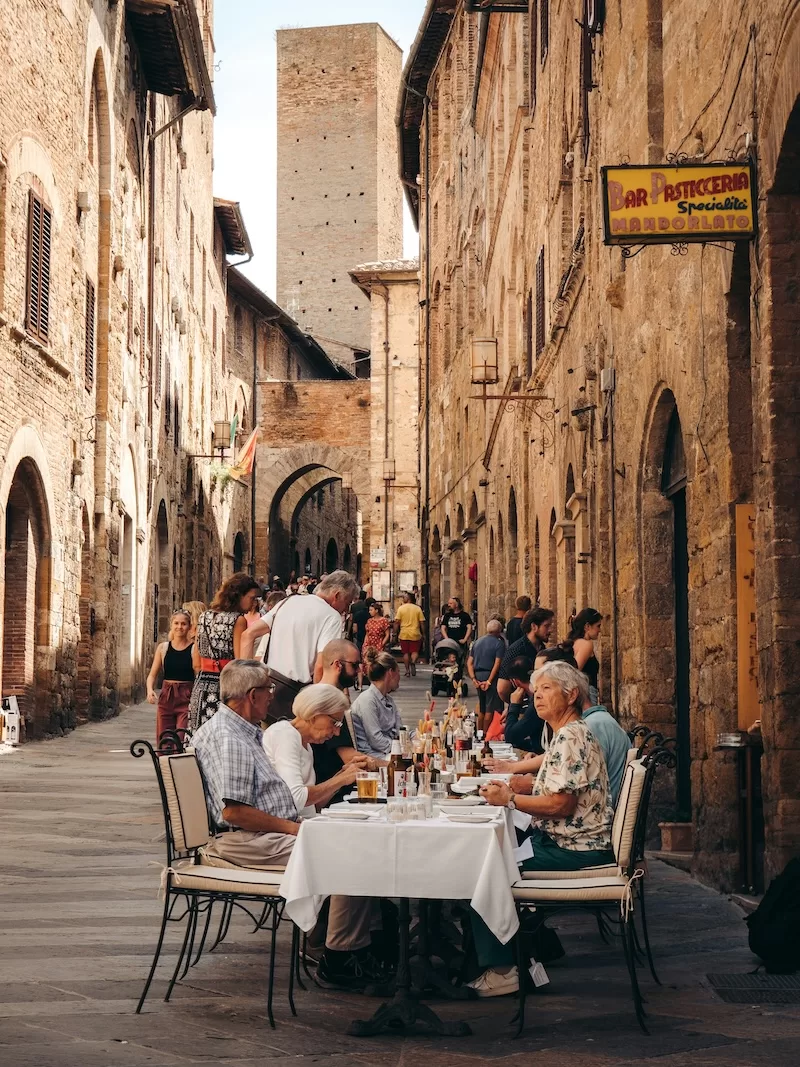
Healthcare and transport
Tuscany’s healthcare system is among Italy’s best. Foreign residents can access public care through the Servizio Sanitario Nazionale after registration, or use private clinics for faster appointments. Florence and Pisa have excellent hospitals, while rural areas rely on smaller centers.
Public transport is reliable between cities, but limited in villages. Trains connect Florence, Siena, and Pisa easily, yet if you live outside town, owning a small car or scooter simplifies life. Petrol is expensive, but short distances keep costs low.
Seasonal Tuscany
Tuscany changes with the calendar in ways you can feel as much as see. Each season redraws the landscape and the habits of the people who live within it.
Spring smells like wet soil and wild herbs. Fields turn green again, and markets fill with artichokes and early strawberries. In towns, terraces reopen, and people linger outside longer, coats still on, faces turned to the sun. It’s the season of local festivals (everything from food to flowers and even frogs) each one a small excuse to be outdoors after winter’s quiet.
Summer stretches out like a long breath. In the cities, people do their best to escape the heat; blinds stay drawn until evening, and every errand happens early or late. In the countryside, days revolve around light: watering gardens at dawn, eating under trees, resting when the sun stands highest. August empties the cities as families head to the coast. Even Florence feels hushed, its streets left to those who stayed behind.
Autumn is Tuscany at its most honest. The hills shift from green to bronze, and the air smells faintly of smoke and crushed grapes. Villages come alive with harvest: olives, chestnuts, wine. Work and celebration blend as farmers, friends, and strangers help one another bring in the season’s last weight. Evening meals grow heavier, built around what the land just gave back.

Winter folds everything inward. The tourists vanish, the mist settles in valleys. Locals gather indoors, woodstoves burning, conversations looping late into the night. Markets shrink, but bakeries stay warm, full of citrus and spice. The landscape looks stripped back, more private, the Tuscany that belongs only to those who live there year-round.
Seasons don’t just change the view; they change the tempo of living. Nature leads, and people follow, adjusting, pausing, beginning again. It’s that steady, circular motion that makes life in Tuscany feel whole. And if you’re thinking of experiencing it for yourself, it helps to know what it actually takes: the paperwork, the planning, and the patience that turn a long stay into a lasting one.
How to Make the Move
Visas and paperwork
Moving to Tuscany takes more than a dream and a suitcase. For EU citizens, the process is simple: you can live and work freely, only needing to register locally if staying longer than three months. For everyone else, Italy offers several visa paths depending on your stage of life and source of income.
The most common route for retirees or financially independent expats is the Elective Residence Visa. It requires proof of sufficient passive income (around €31,000 per year for individuals, higher for couples), private health insurance, and a place to live. It doesn’t allow formal employment in Italy, but it’s perfect for those living off pensions, rentals, or investments.
For remote workers and entrepreneurs, the very recent Digital Nomad Visa might be the best choice. This visa has two tracks: one for digital nomads (freelancers, consultants, and other independent specialists) and another for remote workers employed by companies that allow full remote work. Expect to show proof of steady income, proof of legal residence, health coverage, proof of qualifying profession, lease, rental contract, or deed for property in Italy, and a clean record, among others.
Italy’s also known for its Self-Employment Visa, though it’s more bureaucratic, demanding detailed business plans and professional licenses.
Regardless of the path, patience is key. Things get done, just not always when you expect them to. Forms often need translations, notaries, and multiple signatures. Most expats use a relocation consultant (consulente del lavoro) or immigration lawyer to navigate registration, health insurance, and tax setup. Think of it as the entry fee for a calmer, fuller way of life.
Top towns and regions for expats
Tuscany’s appeal is that it offers so many ways to live well. The same train line can take you from a city of galleries and aperitivi to a village where you trade the sound of scooters for church bells. Choosing where to land depends less on the fantasy and more on how you prefer to live, surrounded by art, vineyards, or sea air.
Florence
Italy’s Renaissance capital remains the beating heart of Tuscany. It’s walkable, dynamic, and full of life, where every errand takes you past a sculpture or café terrace that could stop you in your tracks. Housing is pricier, but opportunities for community and culture make it worth it.
Why it works: Florence has the strongest expat networks, reliable transport, and excellent healthcare. It’s ideal for newcomers who want an easy start without giving up connection or comfort.
Lucca
Encircled by 16th-century walls, Lucca blends history with livability. Locals glide along the ramparts as the sun dips, children race across the piazza, and conversation lingers like the evening light. The city offers affordable rents, quick access to Pisa, and a thriving local music scene.
Why it works: safe, clean, and community-oriented, Lucca gives expats the feel of small-town Italy without sacrificing amenities.
Arezzo
Arezzo often flies under the radar, but those who settle here rarely leave. Its streets have serious local energy, not tourism, and its monthly antique fair is one of Italy’s best. There’s art, food, and history at every turn, but the prices stay reasonable.
Why it works: lower housing costs and a strong creative community make Arezzo a great base for freelancers, artists, and long-term expats.
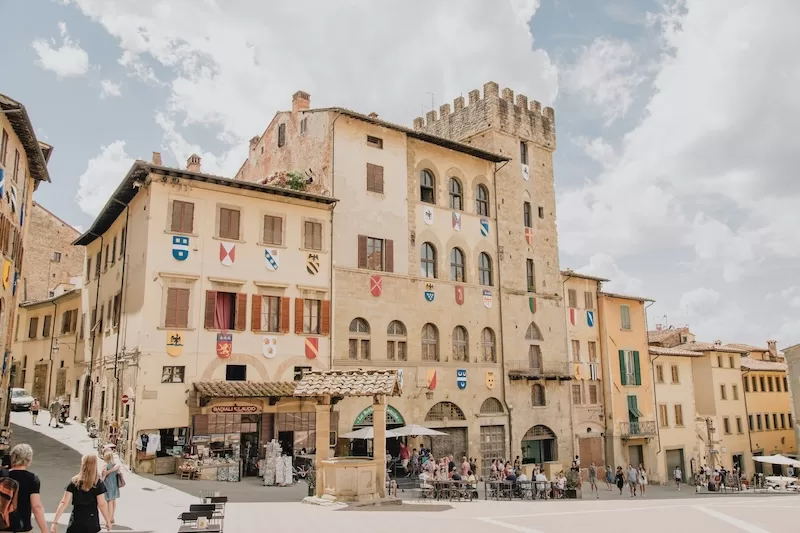
Pistoia & Montecatini Terme
Halfway between Florence and the coast, these towns offer a gentler version of central Tuscany. Montecatini’s thermal spas draw visitors from across Italy, while Pistoia feels authentic, a lived-in city with open markets and a slower momentum.
Why it works: great train links, fair housing prices, and a genuine local feel. Perfect for those who want central access without the chaos of Florence.
The Chianti Region
The Chianti hills stretch between Florence and Siena, known for their vineyards, olive groves, and sensory living. Days are marked by the sound of tractors and the smell of fermenting grapes. Small villages like Greve or Castellina offer everything you need, minus the noise of modern life.
Why it works: peaceful scenery, tight-knit communities, and the kind of food and wine culture that makes daily life feel like a privilege.
Coastal Tuscany (Livorno, Porto Santo Stefano, Grosseto)
By the Tyrrhenian Sea, mornings start with espresso on the promenade and end with fresh seafood and sea breeze. Coastal Tuscany stays mild through winter, making it one of the most pleasant year-round climates in Italy.
Why it works: excellent weather, easy beach access, and fewer tourists once summer ends. Ideal for retirees and anyone who dreams in salt air and sunlight.
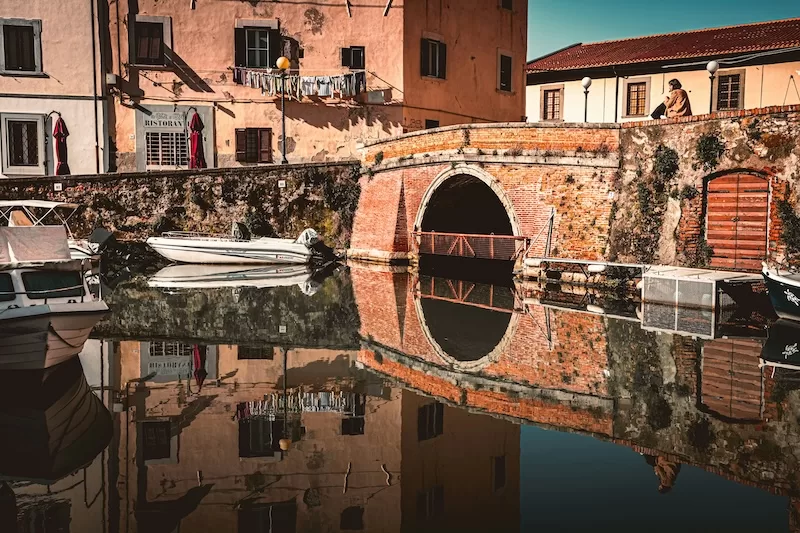
Most newcomers start in Florence or Lucca, renting for a year before finding their groove elsewhere. The truth is, Tuscany doesn’t reveal its favorite corners all at once. You discover them gradually through markets, train rides, and conversations that last longer than you planned.
Work and income
Most newcomers arrive with remote jobs, retirement income, or savings. Living comfortably as a single person usually requires around €2,000 per month, covering rent, food, and some leisure. Couples can manage well on €2,800–€3,000.
Remote work has become easier across Tuscany. Cities like Florence, Pisa, and Siena offer strong internet and modern co-working spaces such as Impact Hub or Nana Bianca. Rural zones may need mobile hotspots or satellite connections, but most expats find ways to stay connected.
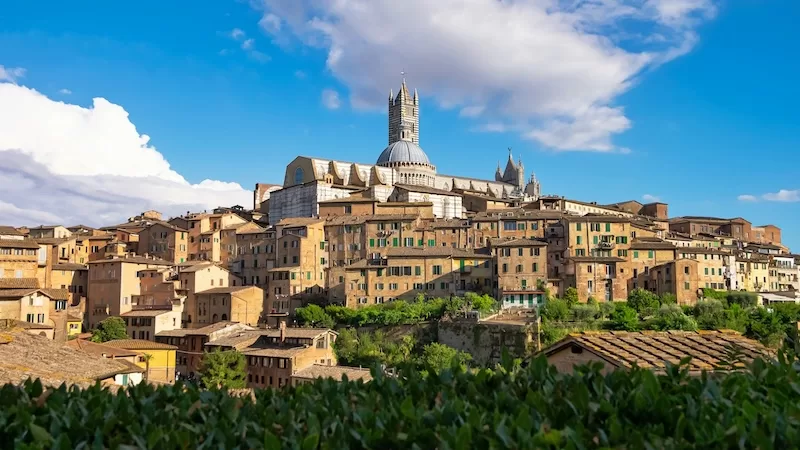
Traditional expat-friendly jobs include teaching English, offering tours, managing guesthouses, or freelancing in creative or digital fields. Opening a small agriturismo (farm-stay) or boutique B&B is also popular, though it involves navigating Italian permits and taxes.
Registering as self-employed (partita IVA) requires paperwork and patience but gives freedom to bill clients and contribute to the national system. As in much of Italy, bureaucracy rewards persistence and penalizes rush. Once established, most expats describe the trade-off as worth it: less money stress, more time for living well.
Pros and Challenges of Life in Tuscany
The upsides
- A vibe that values food, friendship, and beauty
Tuscany teaches a different kind of productivity. Work fits around life, not the other way around. People stop to talk, meals stretch long, and nobody apologizes for taking an afternoon espresso break. Beauty is everywhere: in the slant of light, in a conversation, in the smell of bread baking on the next street. Over time, that rewires you. - Lower living costs compared to northern Europe or US cities
Once you adapt to local habits, life can be remarkably affordable. Rent drops outside major cities, and shopping at open-air markets keeps food costs low. A weekly budget of €80–€100 covers fresh produce, wine, and local cheese if you cook at home. - Excellent healthcare and long life expectancy
Tuscany’s public healthcare is among Italy’s best. The region’s hospitals are modern, and even small towns have clinics with English-speaking doctors. The local diet, walking lifestyle, and stress-free heartbeat contribute to a life expectancy near 84 years, one of Europe’s highest. - Easy train travel across Italy
Florence, Pisa, and Siena sit on strong rail lines that connect you to Rome, Milan, and Naples in hours. Local trains make weekend escapes simple. One minute you’re at your desk, the next you’re having wine in Cinque Terre or lunch in Bologna.
The challenges (and how to handle them)
- Bureaucracy that moves at its own pace
Italy’s paperwork culture can feel labyrinthine: offices open briefly, documents require multiple signatures, and processes seem to change without notice. The best antidote is preparation and patience. Make copies of everything, carry identification to every appointment, and never expect one visit to be enough. Hiring a local consultant (consulente del lavoro) or relocation service pays off quickly, as they know which offices still use paper forms and who to ask for help. Approach it like a cultural ritual, not an obstacle. - Language barriers outside tourist hubs
In Florence or Pisa, English is common, but in rural areas you’ll need at least basic Italian. Invest early in language classes or online lessons. Locals respond warmly to effort, even if your grammar isn’t perfect. Label household items in Italian, listen to local radio, and let yourself make mistakes. It’s often how friendships begin. - Winter realities
Stone houses stay cool year-round, which means cold in January. Heating can get expensive, especially in the countryside where systems rely on gas or wood. Learn the strategies locals follow: close shutters during the day to retain warmth, heat only key rooms, and stock up on firewood in autumn before prices rise. Cozy becomes a survival strategy, not a luxury. - Transport beyond the cities
Outside urban areas, public transport thins fast. Owning a car or scooter opens access to small towns, vineyards, and beaches that buses rarely reach. Check fuel prices, but remember distances are short. Many expats use compact cars with efficient diesel engines, or split vehicle costs with neighbors. Train apps like Trenitalia make navigating intercity travel straightforward.
Tuscany rewards curiosity and calm. The systems might test your patience, but they also teach you to slow down, plan ahead, and find joy in the waiting. Once you stop fighting its rhythm, you start to live inside it. The same cycle that makes a bottle of Chianti take a year to age properly and a friendship take time to build. For those who adapt, the reward is not just a beautiful place to live, but a gentler way to exist.
FAQs
Q1: How much does it cost to live in Tuscany per month?
For a single person, a comfortable monthly budget ranges from €1,400 to €1,800, depending on lifestyle and location. Florence and Siena are on the higher end, while smaller towns such as Lucca, Pistoia, or Arezzo are more affordable. In places like Pienza, rent for a one-bedroom apartment can fall around €600–€800, and local markets keep food costs pleasantly low. Couples can live well on €2,500–€3,000, especially outside major tourist areas.

Q2: Is Tuscany a good place for expats?
Yes. Tuscany is one of Italy’s most popular regions for expats thanks to its safety, healthcare, cultural richness, and relaxed pace of life. The region attracts retirees, digital nomads, and families seeking balance rather than speed. Towns like Lucca and Arezzo have well-established expat networks that help newcomers settle quickly.
Q3: Do I need to speak Italian?
In larger cities, many locals speak English, but smaller towns still operate mostly in Italian. Knowing basic phrases helps with shopping, paperwork, and building community. Free language exchanges (tandem groups) and evening classes are common in Florence, Lucca, and Pisa.
Q4: How is healthcare for foreigners?
Excellent. Tuscany’s healthcare system is part of Italy’s Servizio Sanitario Nazionale (SSN), offering residents access to hospitals and clinics with minimal costs. Foreigners can register with the SSN after obtaining a residence permit or choose private insurance for faster appointments. Many doctors, especially in Florence and Pisa, speak English.
Q5: Can foreigners buy property?
Yes, and many do. Non-EU citizens can purchase property in Italy under reciprocal agreements with their home countries. A local notary (notaio) handles the transaction, and hiring a bilingual lawyer ensures smooth translation and due diligence. Expect closing costs of around 10% of the property price, including taxes and fees.
Q6: What is the weather like in Tuscany year-round?
Tuscany enjoys a Mediterranean climate with four distinct seasons. Summers are hot and dry, especially in inland valleys, averaging 30°C (86°F) in July and August. Winters are mild but damp, hovering around 8–12°C (46–54°F), colder in the hills. Spring and autumn are ideal for outdoor living, with markets full of seasonal produce and long, golden light.
Q7: Is it easy to get around without a car?
In Florence, Pisa, and Siena, public transport and walking make life simple. Between smaller towns, trains connect most routes, but rural villages often require a car or scooter. Roads are scenic yet narrow, so smaller vehicles are more practical. Car-sharing services and regional buses help fill the gaps.
Q8: What kind of visas do I need to move to Tuscany?
EU citizens can move freely. Non-EU citizens can apply for Italy’s Elective Residence Visa (for retirees or those with passive income), Self-Employment Visa, or the upcoming Digital Nomad Visa for remote workers. Expect to show proof of income, health insurance, and housing. Processing can take several weeks, so begin paperwork early.
Q9: Is Tuscany suitable for retirement?
Very much so. The calm lifestyle, mild climate, and exceptional healthcare system make Tuscany a top choice for retirees. Towns such as Lucca, Arezzo, and the Chianti countryside attract those seeking tranquility with easy access to culture and good wine. Cost of living is manageable compared to northern Europe or the US, and social life revolves around community events and food.
Q10: What are the biggest culture shocks for newcomers?
The slower bureaucracy, irregular business hours, and strong sense of local tradition can surprise newcomers at first. Shops often close midday, paperwork can take time, and small towns run on personal connections. Once you adapt, that pace itself lifts the pressure and gives you back a sense of presence you didn’t know you’d lost.

Living Well, the Tuscan Way
Living in Tuscany is less about escape and more about return, to longer meals, to face-to-face conversations, to a version of daily life that feels anchored in something real. It’s not a place that promises perfection. Bureaucracy will test your patience, and the winters can creep into your bones. Yet every day brings something that feels quietly essential: the sound of church bells at noon, the smell of tomatoes simmering on a neighbor’s stove, the small pleasure of walking streets that have seen centuries come and go.
What makes Tuscany special is not only its beauty, but its insistence that you pay attention. You notice light again, taste again, listen again. You learn that “enough” can look like an afternoon spent doing nothing more than sharing a bottle of local wine while the hills turn gold outside your window.
For anyone dreaming of a life with more texture and less rush, Tuscany offers the rare chance to build a groove that feels entirely your own.
If you’d like to keep exploring stories, guides, and practical tips about life abroad, join our community through the newsletter. It’s where we share everything from residency advice to the best small-town cafés worth moving for. It’s free, easy, and the perfect next step if you’re ready to turn curiosity into a plan.
